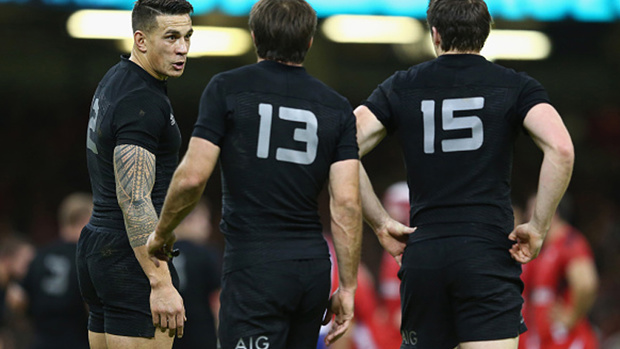Revealed: The Best Month To Give Birth To An All Black
- Publish Date
- Wednesday, 6 May 2015, 7:48AM

Image: Getty Images
The immaculate conception is a story as old as the Bible itself and while you may not have to be on the receiving end of some divine intervention if you're serious about producing an All Black or a Black Cap, you should at least sit down with your partner and talk about sex.
Pretty obvious, right? To procreate, the little tadpole has to bump into the little egg... etc, but we're not talking about the hows and wherefores, we're talking timing.
If you want to give your son the best chance of becoming an All Black, make sure your progeny is entering the world between January 1 and March 31. It pays, if you're a budding cricketer, to be born between September 1 and November 30.
Welcome to the world of Relative Age, one of the more startling revelations in Malcolm Gladwell's Outliers: The Story of Success.
He recalled the story of Canadian psychologist Roger Barsnsley, who in the mid-80s was sitting with his wife Paula at an age-group ice hockey game. She read through the programme and noticed the majority of the players were born January and March. This tickled Barnsley's curiosity, so he went home, drew up a list of professional ice hockey players and found the same phenomenon. It didn't matter so much what year you were born in, but what month.
We have applied that to the All Blacks and Black Caps. Taking 1996 as a starting point (a year that will at times be referred to as The Year Everything Changed, or the year our national sport went professional), 60 of the 173 players who have debuted in a test for the All Blacks since that date were born in the first three months of the year.
January and March are the months that have produced the most All Blacks, with 21 each. February comes in second with 18 (and obviously three less days than either of the first two).
Rugby's eligibility cut-off date for age group teams is January 1 of any given year.
This was interesting, but not conclusive. So we looked at Black Caps who have debuted in a test in the same time frame.
The sample size is smaller and we discounted those that played no age-group cricket in New Zealand. Still, the discovery was surprising: with four of 67 players, January was actually the least productive month. September led the way with nine.
Did the fact that cricket relies a lot less on size have something to do with it?
In fact, the answer was a lot less taxing.
A quick email query to New Zealand cricket established that their cut-off date for age-group eligibility is... September 1.
If you adjust the quarterly figures to take that into account, then the September quarter is the most bountiful three months for producing our modern test players.
This is not likely to be a fluke. In fact, Gladwell says it is an example of what sociologist Robert Merton calls the "self-fulfilling prophecy".
"A false definition, in the beginning... evolves a new behaviour which makes the original false conception come true."
In sport's case, selectors for the youngest age-group rep teams are not really picking the best players, they're picking the oldest and, usually, the biggest players.
Because these guys and girls have had their talent recognised earlier, they get access to better and more concentrated coaching. They're perceived to be the best, they're treated like the best and they actually end up becoming the best.
As an aside, we've known for a long time now that Richie McCaw is a freak. Add this into your admiration file: McCaw was born on December 31. He's not only beaten every openside flanker he's ever been pitted against, he's beaten the theory of Relative Age.
At the other end of the scale, the blindside flanker in McCaw's first test, Reuben Thorne, was born on January 2. Would he have made it without the benefit of Relative Age?
Take your Radio, Podcasts and Music with you

